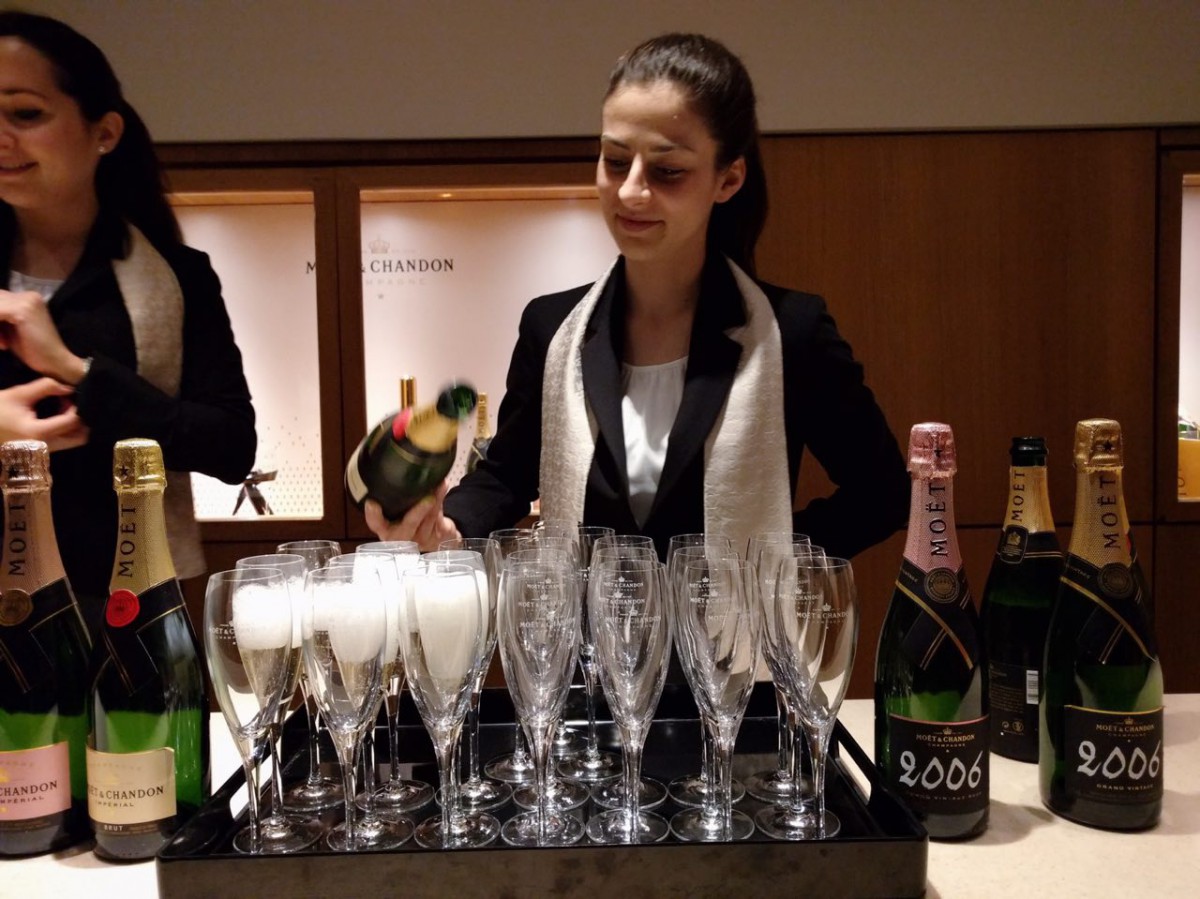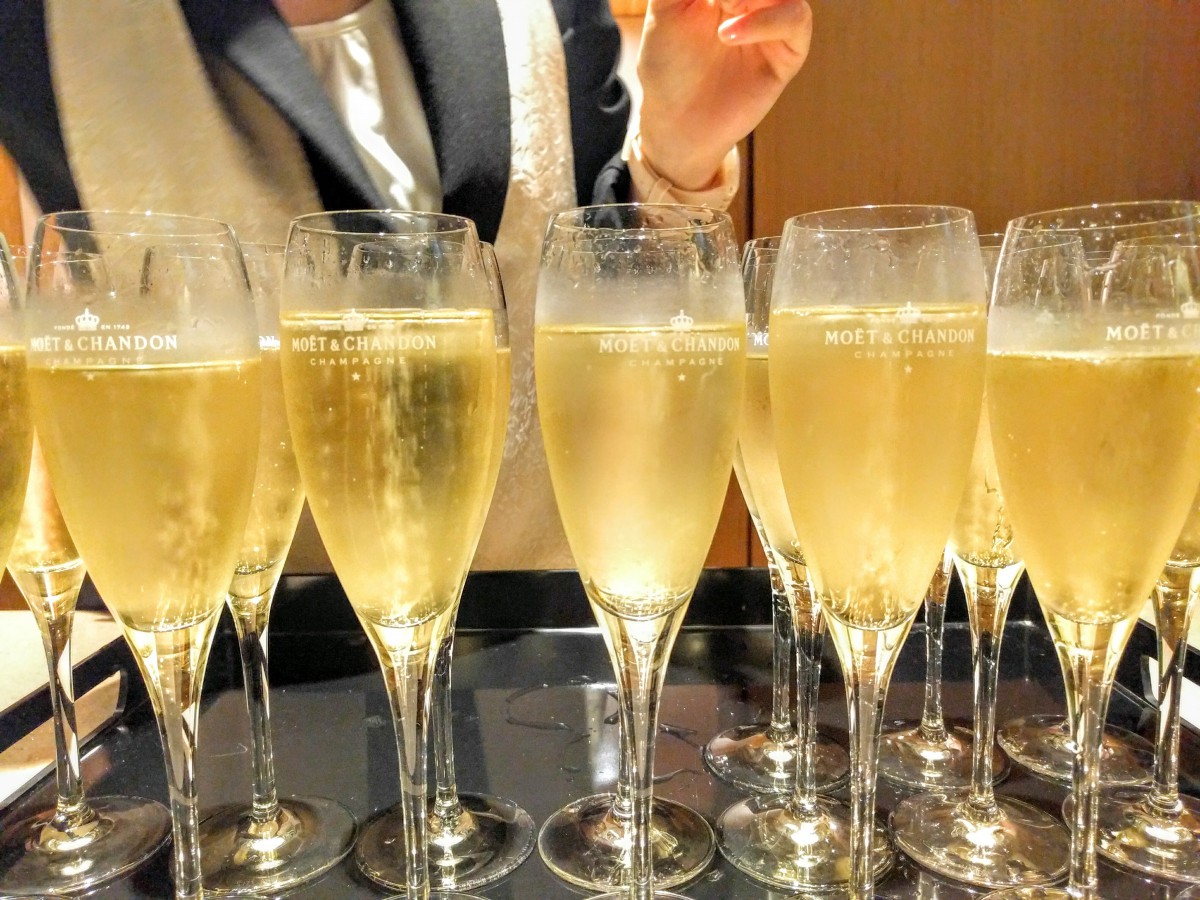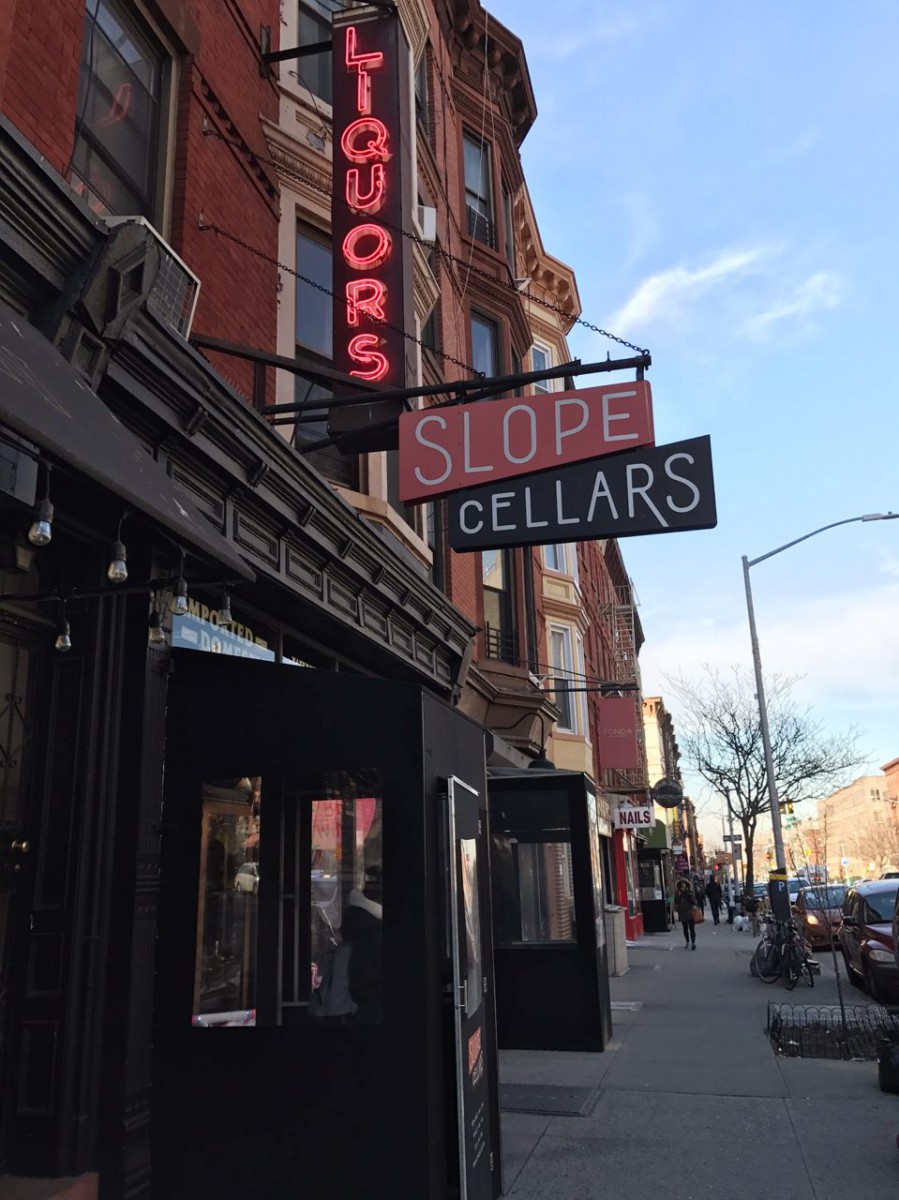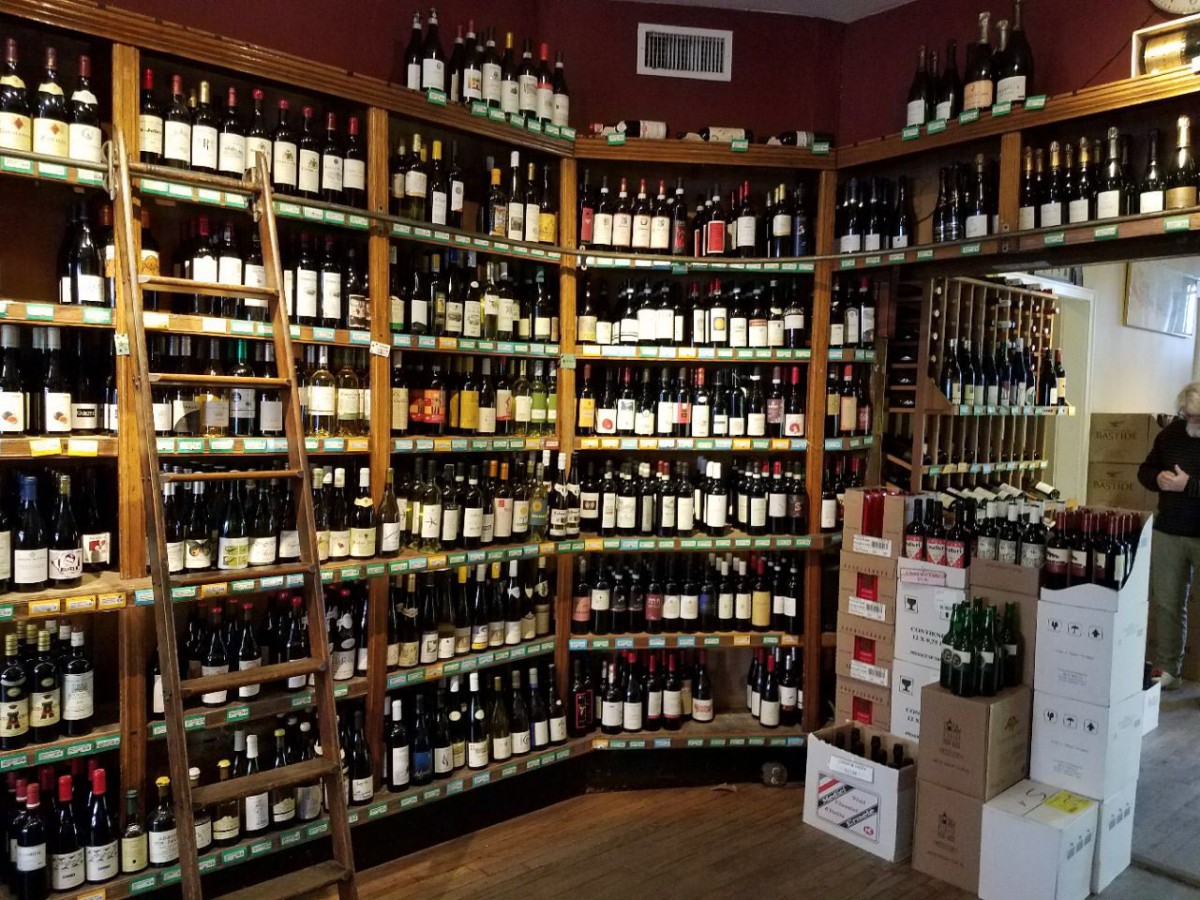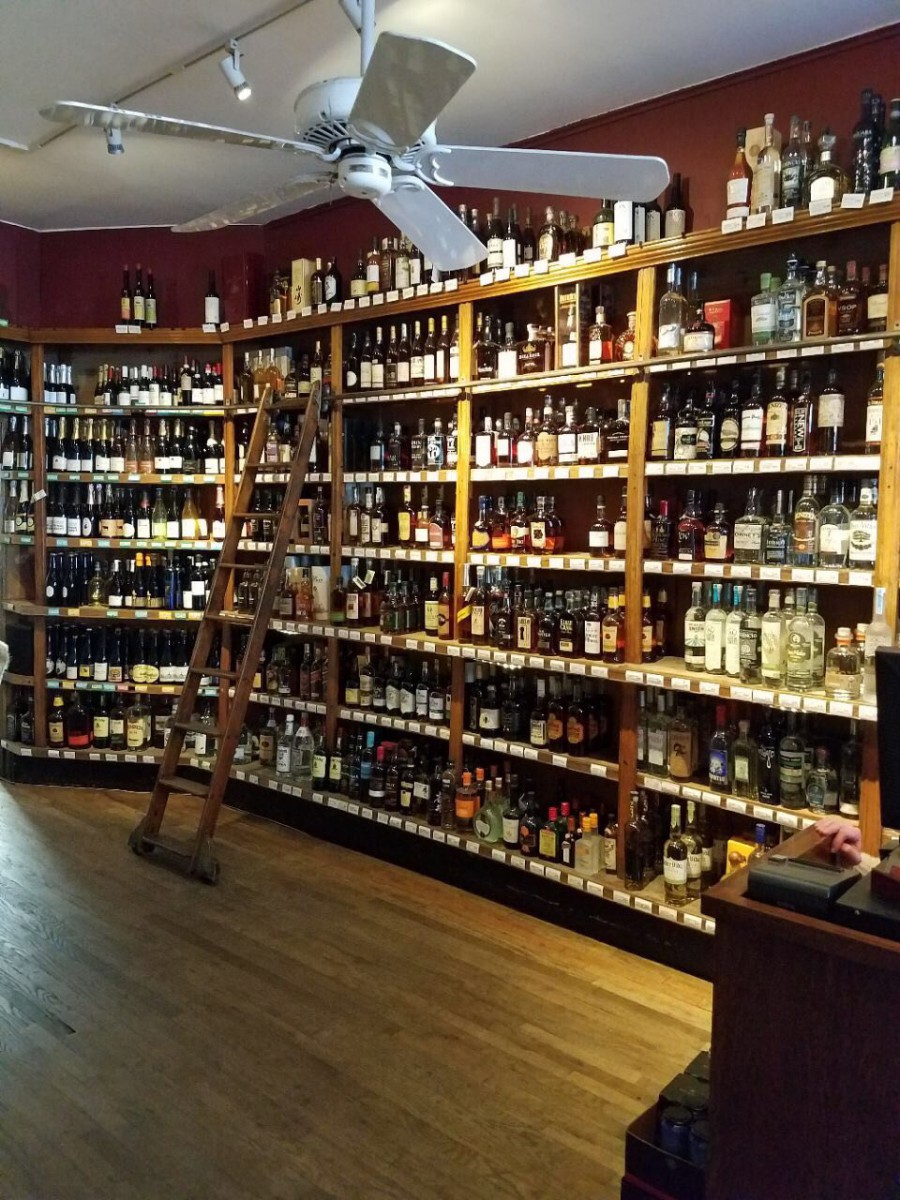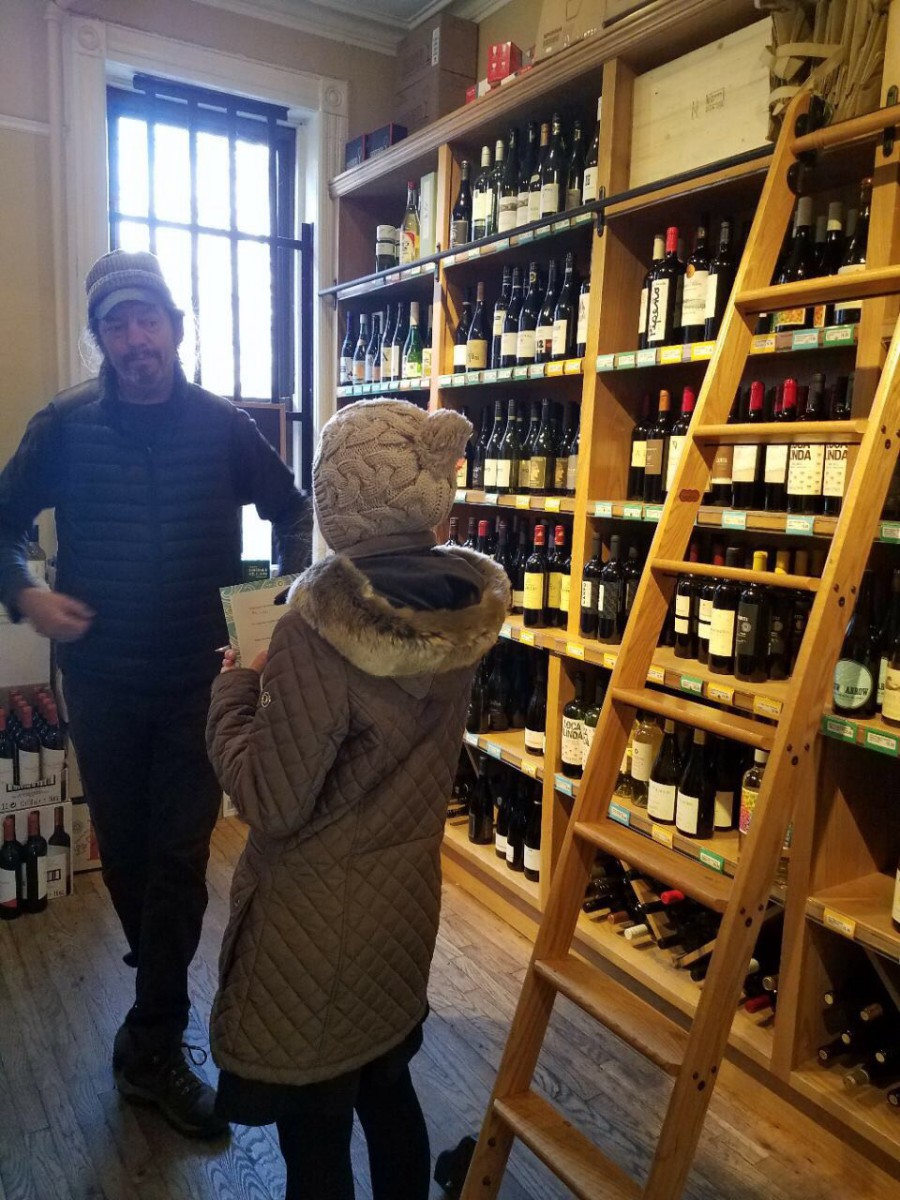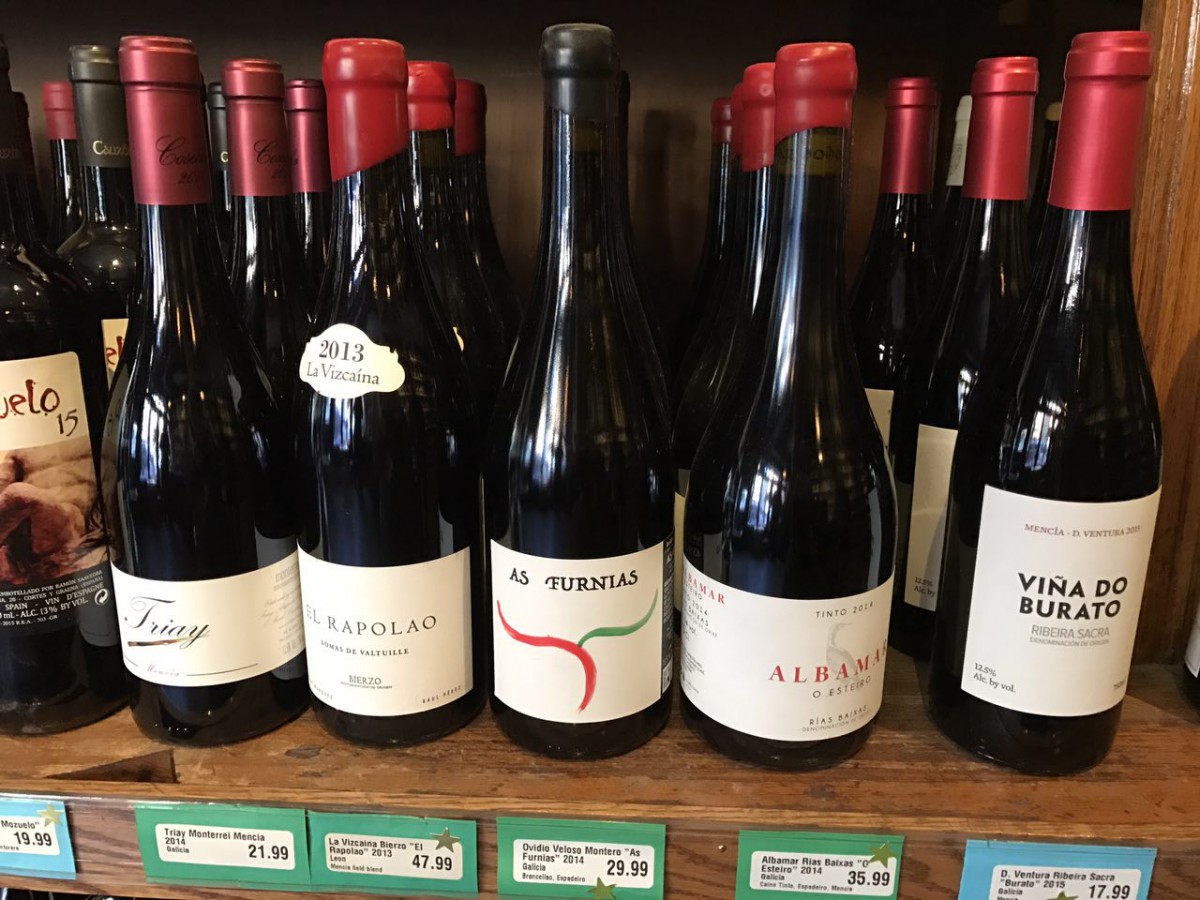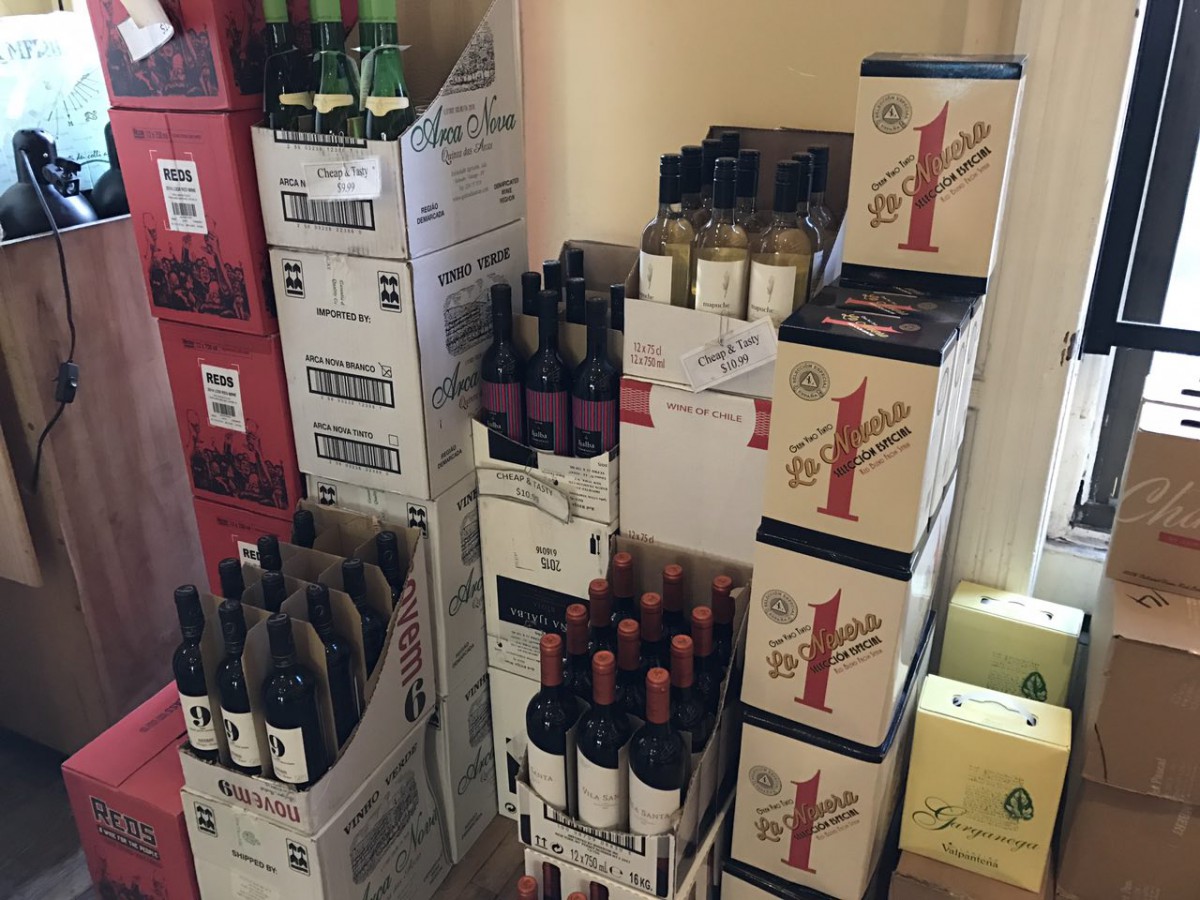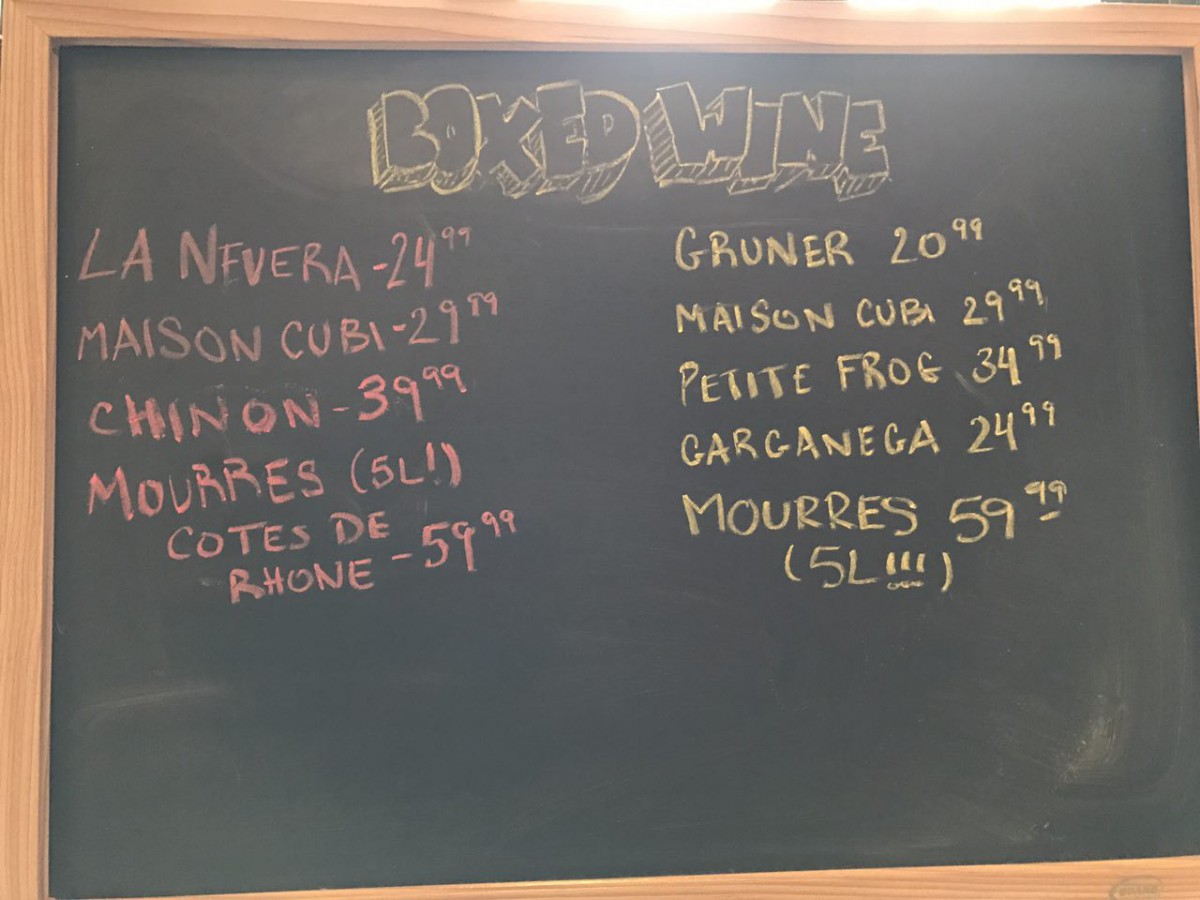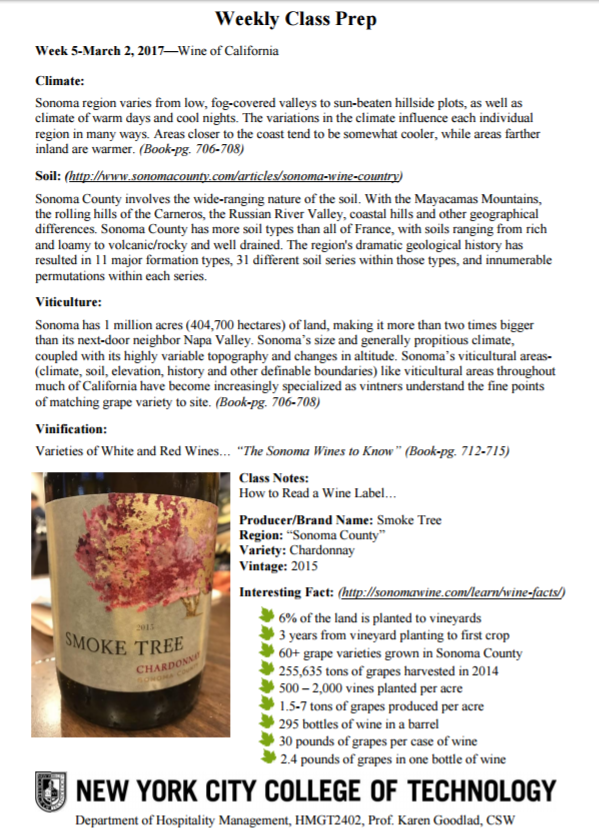In summer of 2016, I was accepted to participate in the Thomas Ahrens International Study Program in Paris, France. Throughout our stay in Paris we have been fortunate to explore and learn Paris’s renowned cuisine, fashion, popular landmarks, architecture, history, language, and many more. In addition, as students from Hospitality Management we had a chance to visit France’s historical province in the northeast of France, which is now best known as the Champagne wine region for the sparkling wine that bears its name. As a student who is currently enrolled in Wine and Beverage Management course, I decided to write about my educational experience to Champagne region of France, by bringing in the knowledge that I have gained from the class during this Spring 2017 semester.
In June 6, 2016, we had an opportunity to visit the two wineries that are located within the Champagne region: “Moët & Chandon” and “Champagne Geoffroy”. Our first stop was at Moët & Chandon located in Epernay, Champagne. It was about two-hour ride on the bus and is approximately 160 km north east of Paris. Upon entrance to the house of Moet & Chandon, we were introduced to our tour guide who was a Japanese lady, with full of knowledge about the house. Tour started off with a brief history of the house, followed by a short video. According to their website and my recall from the video, the Moët & Chandon has been the champagne of success since 1743. Faithful to its founding philosophy of “sharing the magic of champagne with the world”, Moët & Chandon offers a wide range of wines, from the iconic “Moët Impérial” and “Rosé Impérial” to the “Grand Vintages”, the cellar master’s own interpretation of the year’s harvest. (Moët & Chandon, Champagne, 2017).
After the video has ended, we walked through the 17 miles of underground cellars. Going down into the cave, we could immediately sense the cold 10°C (50 F) degrees’ air. The tour guide started by explaining the defining points of the Champagne region and Champagne making process which consisted of two fermentations. Since, I was a student who know next to nothing about wine, I did not understand what the tour guide was talking about. However, using my knowledge gained from the class, I can now explain the whole four methods of making the Champagne or the sparkling wine that consists of “Carbonation Method”, “Traditional Method” (better known as Méthode Champenoise); “Transfer Method”, and “Charmat Method” (also known as the Tank Method). The difference between Champagne and other sparkling wine, is that Champagne can only be produced in the Champagne region of France, and can only use three traditional grapes: Chardonnay, Pinot Noir, and Pinot Meunier. According to their website, each grape varietal contributes its own special qualities to the uniquely delectable pleasure of Moët & Chandon champagnes. Sparkling wines outside of the Champagne region go by many other names, but none of them are Champagne.
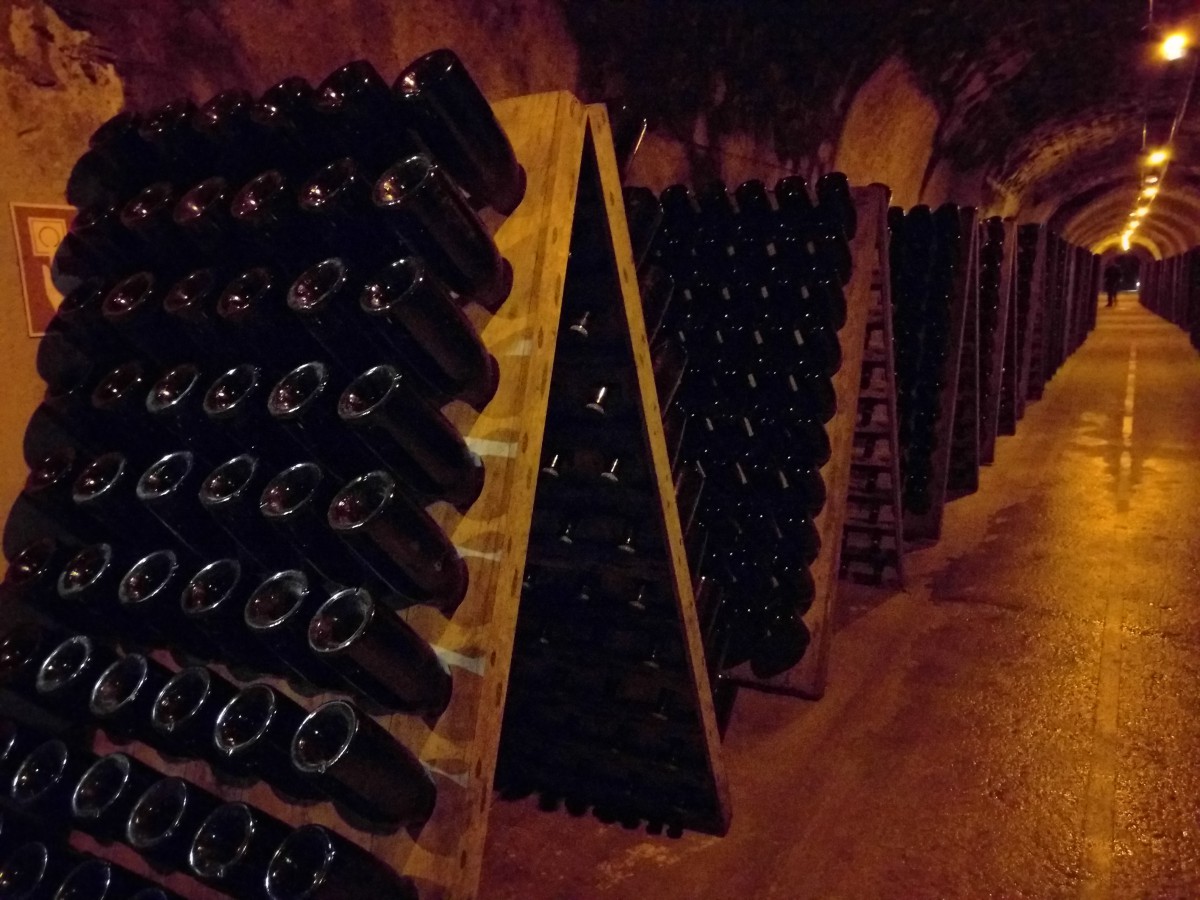
Rows of riddling racks filled with bottles, also known as Remuage (rotating the dead yeast cells ‘lees’ towards bottle neck).
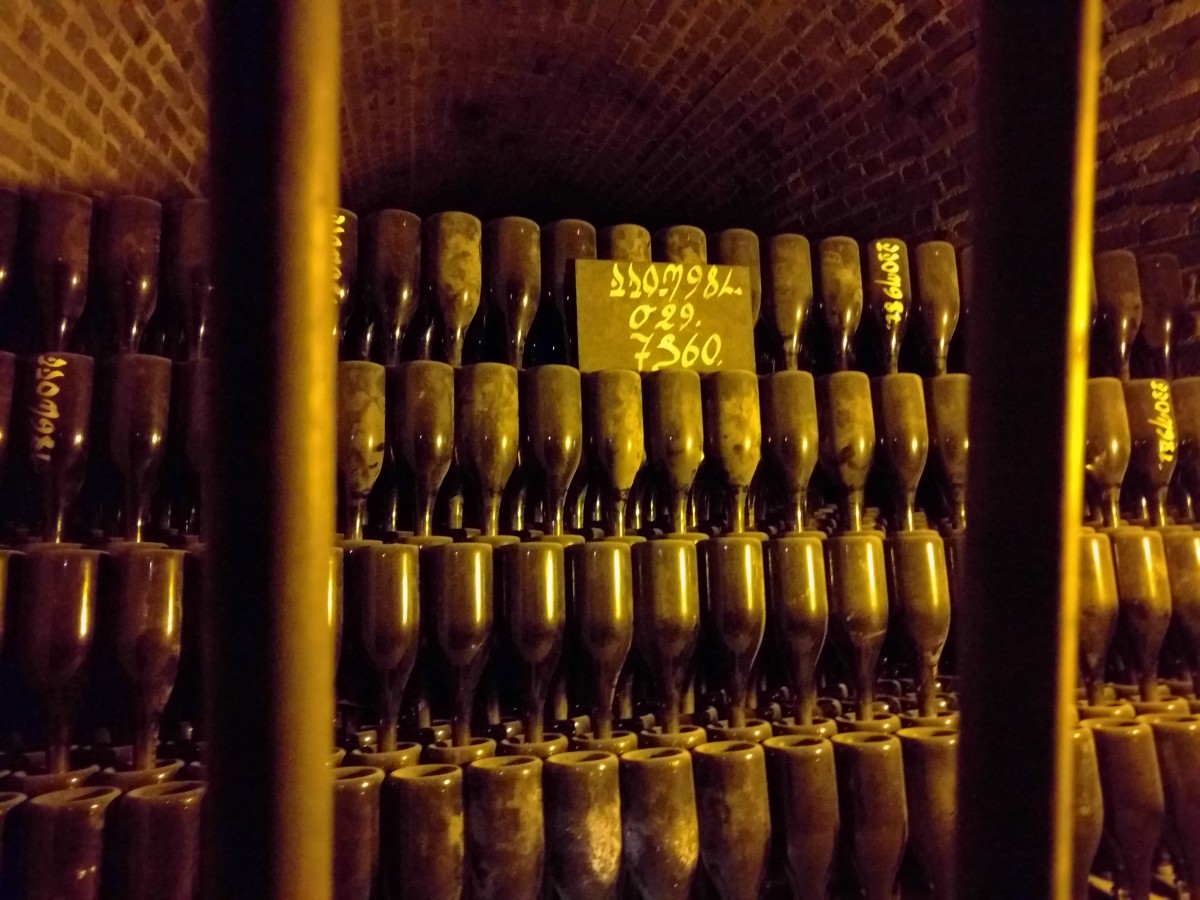
This sign reads as follows: 1st line – wine master’s secret code, 2nd line – location in the caves, 3rd line – number of bottles in this group.
As we were walking through the dark alleyways lined with thousands of fermenting bottles, the tour guide explained the entire process of “Methode Champenoise” that starts off with the process known as Assemblage (the grapes are gently pressed to avoid any color extraction from the skins, next the juice is fermented to dryness, and the different wines are blended); Liqueur de tirage (yeast and sugar is added into the wine bottle to start the second fermentation); Remuage (rotating the dead yeast cells ‘lees’ towards bottle neck); Disgorgement (freeze and remove ‘lees’ in bottleneck); the bottle is then topped off with a final dosage known as Liqueur d’ expedition (a mixture of wine and sugar that will determine the final sweetness level of the finished product), then corked, caged, and labeled.
As our tour continued, we entered the tasting room where the Champagne glasses were lined up, followed by tasting under the guidance of a professional sommelier (wine steward), who presented the three types of Champagnes that are “Imperial”, “Rose Imperial” and “Nectar Imperial”. As I remember, we were given glasses of “Impérial Champagne” to taste. The Champagne we tasted was considered as non-vintage, light and delicate. The main difference between vintage and non-vintage Champagnes is that, the vintage is made from the grapes of only one year’s harvest, whereas non-vintage Champagne is a blend of different years’ harvest.
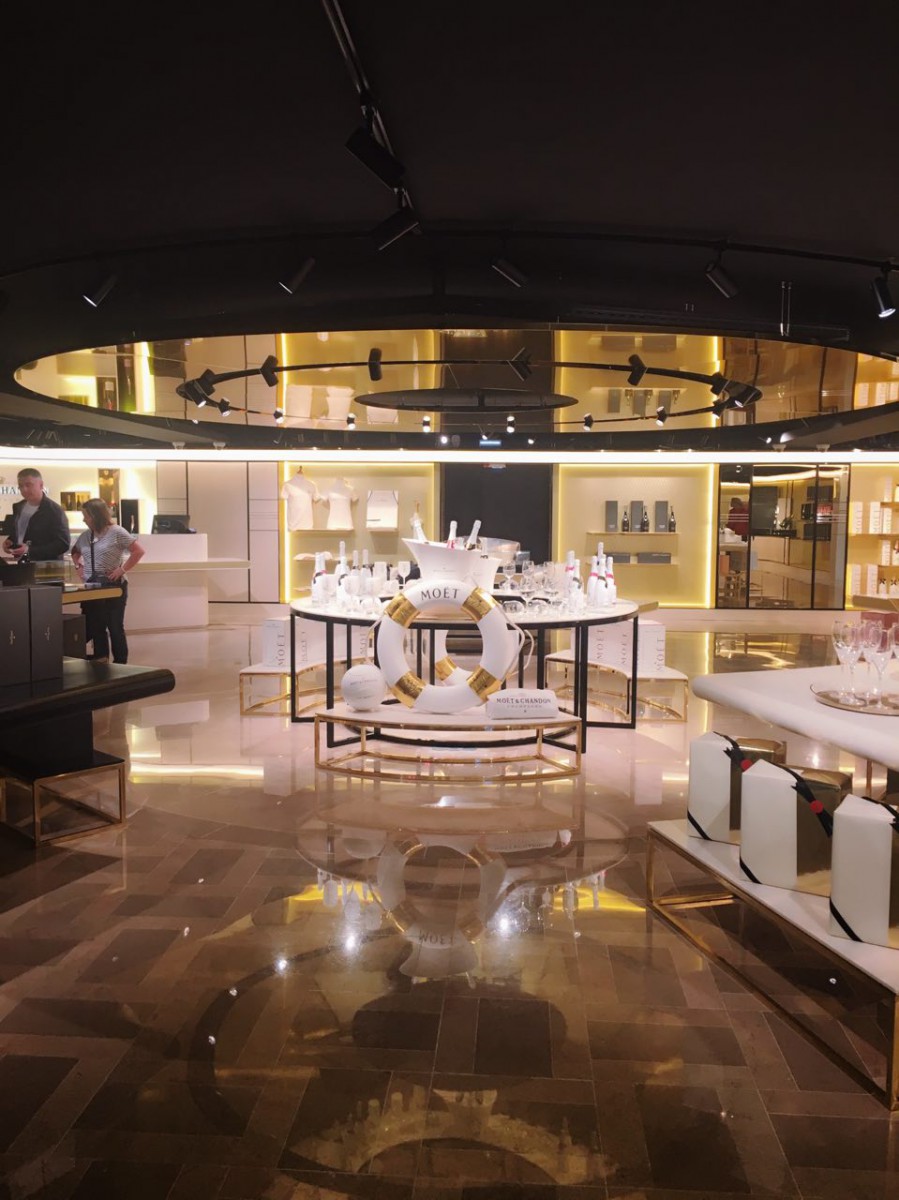
Gift shop of Moet & Chandon.
Exiting the tasting room, we got back to the ground floor and have entered the fabulous gift shop of Champagne house Moët & Chandon, where we were exposed to all types of Champagnes that are produced there. The prices varied from low to very expensive.
To conclude, as a student who is enrolled in Wine and Beverage Management course, I was able to get a better understanding and use of wine terminology to explain about the entire process of making the sparkling wine, by recalling my visit to Champagne region of France, from summer of 2016. Even though, I did not have a basic knowledge about wine during my visit, I can still say that it was the most memorable and educational tours I have ever been part of. If there is an opportunity in the future, I would not hesitate to go there again and would recommend to anyone who enjoys or interested learning about wine.
References
Eat love Savor Luxury Lifestyle Magazine. DISCOVER: Moet & Chandon Champagne. Retrieved from EAT LOVE SAVOR: http://eatlovesavor.com/moet-chandon-champagne/
Moët & Chandon, Champagne. SUCCESS & GLAMOUR. Retrieved from Moët & Chandon: https://us.moet.com/The-House
Sparkling Wine Production. Retrieved from The Sommelier Update: http://arrowheadwine.blogspot.com/2012/06/sparkling-wine-production.html



